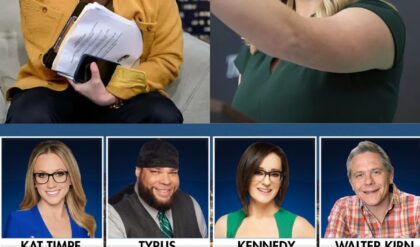In a political landscape increasingly defined by polarization and media distrust, the confrontation between White House Press Secretary Karoline Leavitt and the hosts of The View has become a flashpoint in the ongoing debate over media credibility and representation.
A New Era in White House Briefings
Karoline Leavitt, appointed as White House Press Secretary at 27, made history as the youngest person to hold the position. In her inaugural briefing, Leavitt announced significant changes to the White House press room, including the introduction of a “new media” seat. This seat, traditionally reserved for White House staff, would now be available to independent journalists and influencers who meet specific criteria and pass Secret Service requirements. Leavitt’s move was seen as an effort to diversify media representation and challenge the traditional dominance of legacy media outlets like CNN and The New York Times .
The View’s Response: A Clash of Perspectives
The hosts of The View reacted strongly to Leavitt’s remarks, particularly her statement that there would be “no more funding for transgenderism and wokeness” across federal agencies. Whoopi Goldberg criticized Leavitt for her opposition to “wokeness,” arguing that such policies were instrumental in advancing women’s rights and racial equality. Goldberg contended that without the progress made by the feminist and civil rights movements, Leavitt might not have had the opportunity to serve in her current role .
Joy Behar added to the criticism, suggesting that Leavitt’s appointment was based on her physical appearance, stating, “She’s probably been put in there because, according to Donald Trump, she’s a 10” . This comment was widely condemned as sexist and dismissive of Leavitt’s qualifications and experience.
The Fallout: A Broader Debate on Media Trust
The exchange between Leavitt and the hosts of The View sparked a broader conversation about media trust and representation. Leavitt’s supporters viewed the criticism from the show’s hosts as emblematic of the mainstream media’s bias and resistance to change. They argued that the media’s reaction to Leavitt’s appointment reflected a deeper issue of elitism and a reluctance to embrace diverse perspectives.
Conversely, critics of Leavitt’s policies expressed concern that her approach to media relations could undermine journalistic standards and accountability. They feared that prioritizing “new media” outlets over traditional press organizations might lead to a less informed public and a weakening of democratic institutions.
The Role of Media in Modern Democracy
This incident underscores the evolving role of media in modern democracy. As traditional media outlets face declining trust and influence, alternative platforms and voices are gaining prominence. The tension between established media institutions and emerging voices reflects a broader struggle over who controls the narrative and how information is disseminated to the public.
The confrontation between Karoline Leavitt and the hosts of The View serves as a microcosm of this larger debate. It highlights the challenges faced by both traditional and new media in maintaining credibility and trust in an era of increasing polarization and skepticism.
Conclusion: Navigating the Future of Media
The clash between Karoline Leavitt and The View has brought to the forefront critical issues regarding media trust, representation, and the evolving dynamics of information dissemination. As the media landscape continues to change, it is essential for all stakeholders—journalists, policymakers, and the public—to engage in open and constructive dialogue about the role of media in society. Only through such engagement can we hope to rebuild trust and ensure that the media serves its vital function in a healthy democracy.


